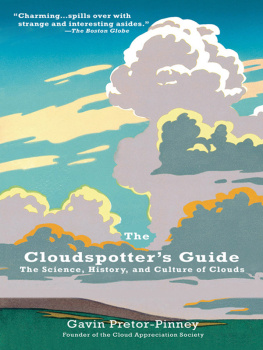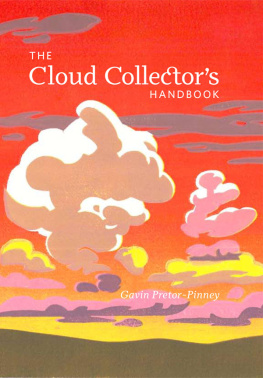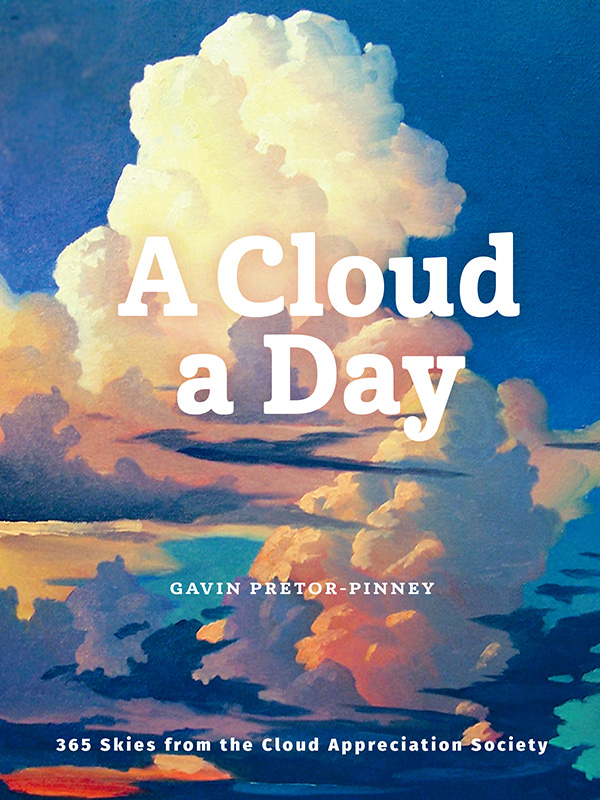
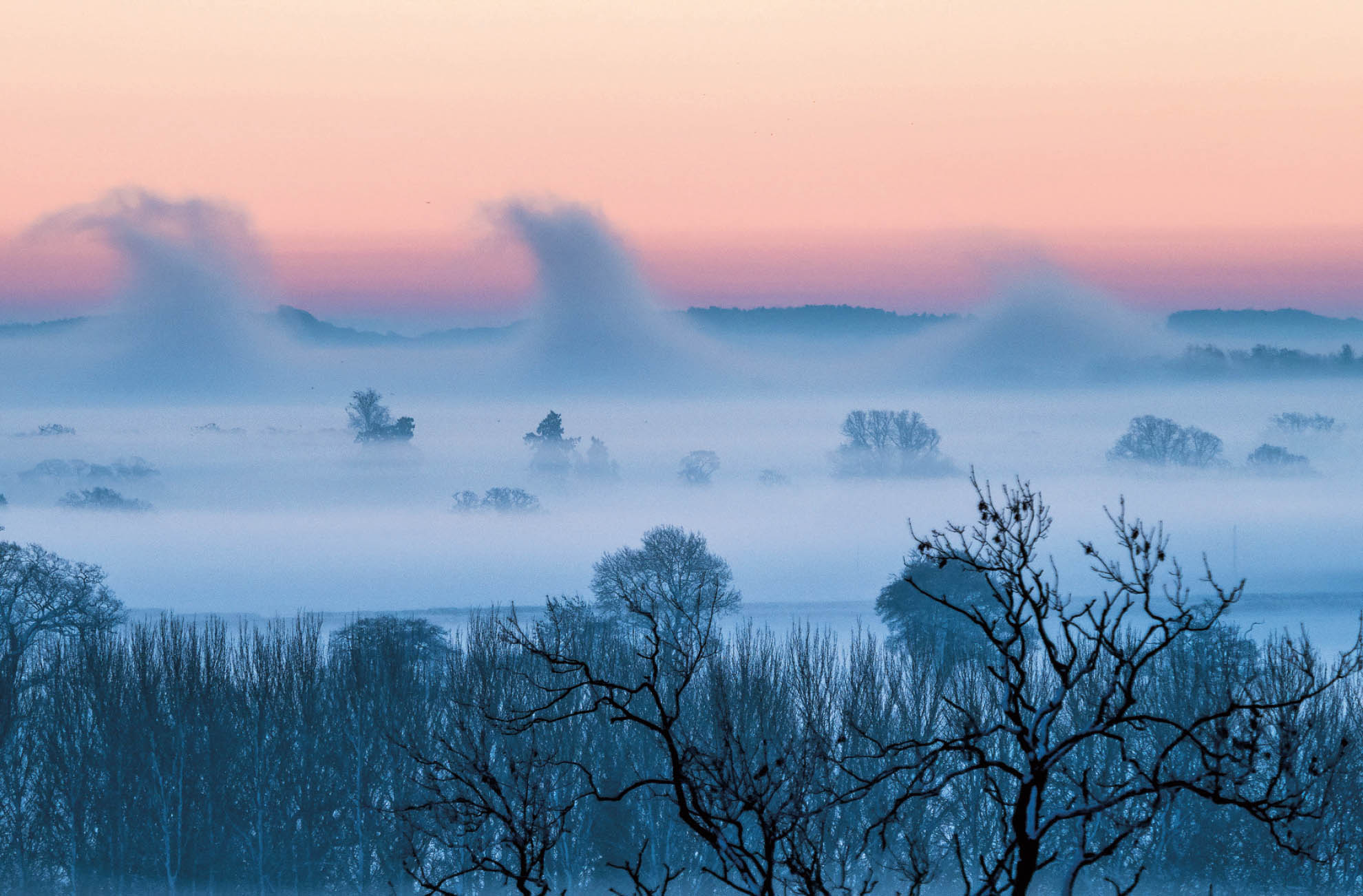

This book is dedicated to all the members of the Cloud Appreciation Society.
First published in the United States of America in 2019 by Chronicle Books LLC.
Originally published in the United Kingdom in 2019 by Batsford.
Text copyright 2019 by Gavin Pretor-Pinney.
All rights reserved. No part of this book may be reproduced in any form without written permission from the publisher.
constitutes a continuation of the copyright page.
Library of Congress Cataloging-in-Publication Data available.
ISBN 978-1-4521-8096-0 (hc)
ISBN 978-1-4521-8158-5 (epub, mobi)
Design by Jon Glick.
Cover image William Hawkins.
Fluctus wave formations, also known as Kelvin-Helmholtz clouds, forming in fog spotted by Pat Cooper over Bridgnorth, Shropshire, England.
Chronicle books and gifts are available at special quantity discounts to corporations, professional associations, literacy programs, and other organizations. For details and discount information, please contact our premiums department at or at 1-800-759-0190.
Chronicle Books LLC
680 Second Street
San Francisco, California 94107
www.chroniclebooks.com
CONTENTS

INTRODUCTION
IT IS EASY TO FORGET that you live in the skynot beneath it, but within it. Our atmosphere is an enormous ocean, and you inhabit it. This ocean is made up of the gases of air rather than liquid water, but it is as much of an ocean as the Atlantic or the Pacific. You may think of yourself as living on the ground, but all that means is that you are a creature of the ocean bed. You still inhabit the atmosphere like a sea creature does the water.
It is a strange thing how little in general people know about the sky, wrote the Victorian art critic John Ruskin . Strange indeed, given how important it is to us. One reason for this might be that the sky is always there. It is the ever-present backdrop to our lives, and anything as ubiquitous as this is easily missed because it hides in plain sight.
We at the Cloud Appreciation Society believe that you would do well to pay more attention to the sky. Having your head in the clouds, even for just a few moments each day, is good for your mind, good for your body, and good for your soul. This book aims to show you why.
The first step to wisdom, as the biologist E. O. Wilson noted , is getting things by their right names. Learning the names for a few of the different cloud types is a good way to start a new relationship with the sky. Every cloud is unique, but we humans love to put things into groups and so we gather their chaotic forms according to ten main types, known as cloud genera. You might have learned some of them at schoolnames like Cumulus, Stratus, and Cirrus. There are also many subcategories of cloud. These cloud species and varieties and cloud features crop up here and there among the main types. Some of them are rare and fleeting, and you have to really pay attention to the sky to be able to spot them. To start getting used to which cloud is which, you can navigate your way through the notable examples using the Cloud Types map.

The Latin names sound formal, but they are mostly just based on how the clouds lookon their shapesand you certainly dont need to remember Latin terms to enjoy finding shapes in the clouds. You might remember doing this when you were young. Back when you had time on your hands, when the only deadline was bedtime, and your imagination could float free.
Finding shapes in the clouds is how most of us first become interested in the sky. There is an aimless pleasure to this side of cloudspotting, one that feels nostalgic. The early age at which this relationship with clouds is first forged might explain why our feelings about clouds and the sky run deep. But once we have grown up, this aimless pleasure of youth feels frivolous. Weve no time to sit around gazing at clouds.
So why when you speak to someone who, for whatever reason, knows their days on Earth are numbered, do you often find them saying that the sky, the transient, ephemeral, ever-changing clouds, feel more worthy of their attentions than most of the stuff we spend our days worrying about? Just because something is aimless doesnt mean that it is pointless.
So find the time, every now and then, to make the shifting clouds be what you please, as the poet Samuel Taylor Coleridge put it . You will be engaging the idle mode of your braina mode that has been effectively eradicated from our daily lives by device culturebecause cloudspotting legitimizes doing nothing. Youll be freeing your imagination and reminding yourself to stay lighthearted. The spottings in this book by members of the Cloud Appreciation Society will help get you in the mood. Use the Clouds That Look Like Things map to find them.
We all know clouds can have a profound effect on our moods. No wonder, then, that they are the tool artists use to introduce feeling to a landscape painting. The 19th-century Romantic painter John Constable argued that in any landscape painting the sky is the chief organ of sentiment, the key note. You can map our changing attitudes towards nature through a history of how we depict the sky in art. Until the last 200 years or so, the sky was treated in Western art less as the key note and more as a footnote. When clouds did appear, they were little more than background decoration, compositional space-fillers, at best cartoon cushions for deities to recline on. They rarely played a major role. But there were exceptions, and you can navigate these alongside more modern artistic explorations of the atmosphere with the Art of the Sky map.
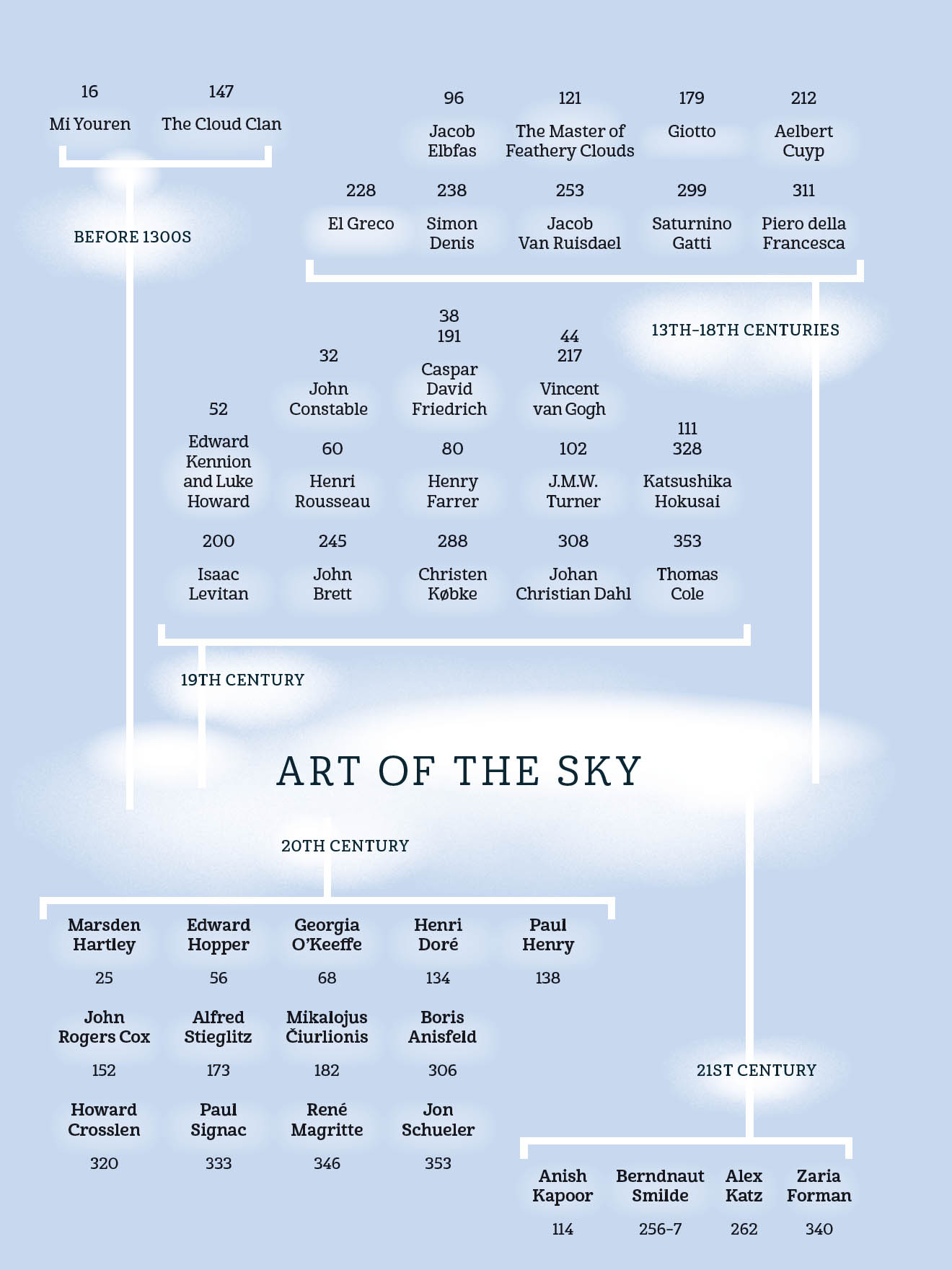
To tune into the sky is to slow down. Clouds may be in a state of perpetual change, but it is one that, more often than not, appears gradual. They might in fact be moving quite fastice crystals in the high, sweeping streaks known as Cirrus can blow along at speeds approaching 300 kilometers (200 miles) per hourbut they appear to change gradually because they are a long way away. So you can treat cloudspotting like a moment of meditation, a meditation on the sky, which differs from other forms in one important regard: What you are concentrating on, the sky, is beyond your control. You cannot plan your cloudspotting for a specific duration, schedule it for a certain moment in the day. Cloudspotting is a frame of mind more than a planned activity. When the sky puts on a show, you just have to be prepared to pause what you are doing and engage with it for a few moments.
Clouds are the embodiment of chaos and complexity. Why do they change so unpredictably? What accounts for their dynamic, ever-shifting forms? The answer is a simple one. Clouds change appearance so much because of the unique qualities of water. It is the only substance on our planet that is found naturally in the three states of solid, liquid, and gas. Nothing else on Earth (or above it) shifts between these states with such ease, ushered along by just the slightest changes in temperature. And one of the three, the gas state of water, is invisible. It is known as water vapor, and it is transparent. So a subtle warming or cooling of the air can be enough to choreograph the magical dance of water from invisible to visible, from transparent gas to a solid-looking array of droplets or a translucent streak of ice crystals.
Next page

